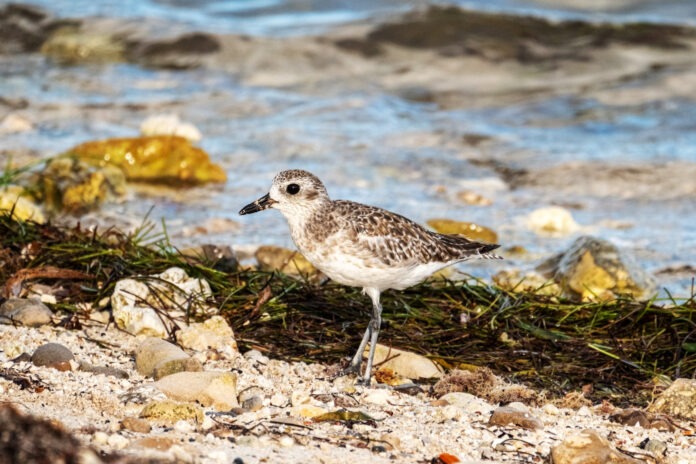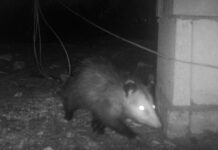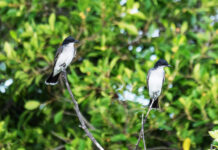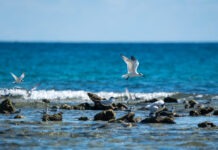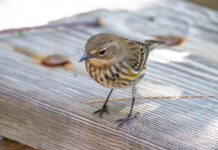Science cannot always explain what a bird is up to.
This came to mind the other day when I walked down the nature trail next to the 1800 Atlantic condos and made my way out to the beach. It was a calm day, hardly any wind and hardly any wildlife to be seen. I lifted my binoculars and scanned the sargassum, finally latching onto a black-bellied plover, a mid-sized shorebird that fed for a while, then stood and eyed me warily. Or at least I think it was a wary look. Black-bellied plovers are visual feeders and have big eyes that open wide, giving them a look that seems constantly both startled and borderline offended. Though maybe I was reading into it.
Black-bellied plovers are about the size of a dove, but with long legs and a pretty stubby bill for a shorebird.
A lot of shorebirds feed with sewing machine-like motions, stepping slowly and probing the ground with their bills. Black-bellied plovers tend to alternately stand still or speed walk like a character out of Benny Hill. They feed primarily on worms, bivalves and crustaceans, and like the Spanish Inquisition, their chief weapon is surprise, sneaking up and snagging their prey while it is still unsuspecting. (I have now used up my quota for the week of allowable references to British comedy shows on PBS in the 1980s.)
Black-bellied plovers breed in the tundra of the high arctic. They are only supposed to winter down here.
Seeing a black-bellied plover here in the summer isn’t exactly rare, but it is curious. Unfortunately there isn’t much in the scientific literature, or at least not in anything I can find, about why one would be here when it should be thousands of miles away in totally different climates and habitats. This might have a lot to do with the fact that the number of birds that decline to migrate is so statistically insignificant that it would probably be impossible to get research grants and other kinds of funding to do it. Who does research on birds that aren’t where they are supposed to be? How would you even do it?
The black-bellied part of the name comes from the fact that their belly plumage in the breeding season turns – you guessed it – black. Their topside in that molt is white flecked with black, which gives them a similar visual vibe to the Sno-Caps chocolate nonpareils that you get at the movies.
The species is also found in the Old World, and is called the grey plover there, because they don’t know how to properly spell the word gray, and because they decided to name the bird after how it looked in their non-breeding plumage.
There’s a debate in bird world whether plover rhymes with lover or clover, but I tend to say it both ways, just to keep things lively. It’s an odd word, “plover.” It derives from the Old French word “plovier,” which in turn derives from the Latin word “pluvia,” meaning rain. It’s unclear if plovers were thought to predict rain, to like rain, to gather in the rain, to be easily caught in the rain, or to sing in the rain. But as the author of “The Dictionary of American Bird Names” Ernest A. Choate once said, “None of these holds water.” (The best jokes are buried in 226-page texts about nomenclature.) As another etymologist put it, there is “no rational connection between the plover and the rain.”
Whatever the deal is, the name stuck.
According to “100 Birds And How They Got Their Names,” medieval bestiaries ascribed plovers the ability to look a sick man in the eye and predict whether he was going to live or going to die. If the man was going to die the plover would simply turn away. If he was going to live the plover would somehow grab his infirmity and fly toward the sun to burn it up.
This notion also turns out not validated by any form of scientific research.
Black-bellied plovers are considered a species of least concern because they breed in remote areas, generally out of the range of human development. They tend to breed within 100 yards of where they nested the previous season. They usually start breeding in mid-May.
Black-bellied plovers are sexually monomorphic. Like a lot of shorebirds, they don’t really build nests so much as scrape out a little divot in the ground. They’re a little fancier than some shorebirds in that they will often line their scrape with lichen or moss.
They lay one clutch of three to four eggs a year. It takes about a month to incubate the eggs, and a little over a month for the chicks to learn to fly. The chicks are precocial, and can walk a day or two after hatching. The females tend to stick around for about 12 days, then leave the males to do the rest of the feeding and rearing.
I’m pretty sure the bird I was seeing on the beach had not just arrived. It didn’t have the crisply defined molt of a just-hatched juvenile. It didn’t have the migrant bird feel, and after two months of rearing young, it would have had to have gone all out to get to the Keys in mid-July.
I’d guess the bird had been here over the winter and didn’t migrate north. Maybe it was unhealthy when all the other plovers flew north. Maybe the genetic clockworks that tell a bird when it should migrate didn’t kick in. Maybe its hormones were screwed up. Black-bellied plovers don’t start to breed until they are 2 or 3 years old, so maybe it was on the avian equivalent of rumspringa or a walkabout. Maybe, like a lot of us, it came to visit and decided life was pretty good, so why leave?













